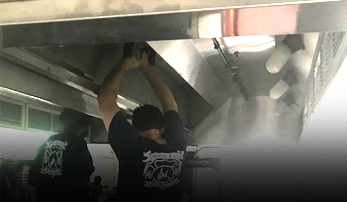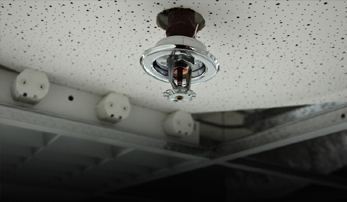Fortunes in Flux Can a Simple Cascade of Balls and Pegs Really Deliver Big Wins with plinko
- Fortunes in Flux: Can a Simple Cascade of Balls and Pegs Really Deliver Big Wins with plinko?
- The Historical Roots and Rise of Plinko
- Understanding the Mechanics of a Plinko Board
- Analyzing Peg Placement Strategies
- The Role of Random Number Generators (RNGs)
- Probabilistic Outcomes and Potential Payouts
- Variations and Modern Adaptations of Plinko
Fortunes in Flux: Can a Simple Cascade of Balls and Pegs Really Deliver Big Wins with plinko?
The allure of a simple game of chance, where gravity and luck intertwine, has captivated players for generations. One such game, gaining considerable traction in recent years, is plinko. This engaging game, reminiscent of the price is right game, relies on a plinko cascade of balls dropping through a field of pegs, ultimately landing in various prize slots. Its simplicity belies a surprisingly strategic element, and that’s what we’re going to explore in depth.
The Historical Roots and Rise of Plinko
While the modern incarnation of plinko is often associated with television game shows, the core concept of a cascading drop game has older roots. Early versions can be traced back to simple arcade games and even rudimentary board games focusing on chance. The game’s popularity exponentially increased with its prominent feature on a very well-known game show, and it’s now readily available in online casino formats. This accessibility has driven its increasing popularity.
The appeal lies in its engaging gameplay. Watching the ball navigate the board is incredibly satisfying, and the element of unpredictability creates a thrilling experience. The modern adaptation frequently includes adjustable prize multipliers, enhancing the potential payouts and increasing the excitement. The blend of visual stimulation and hope for a win is a potent combination.
| 1x | 30% |
| 5x | 20% |
| 10x | 15% |
| 50x | 10% |
| 100x | 5% |
| 500x | 2% |
| 1000x | 1% |
| No Win | 17% |
Understanding the Mechanics of a Plinko Board
At its heart, a plinko board is constructed with a vertical board studded with pegs. A ball is released from the top, and as gravity takes effect, it bounces from peg to peg, creating a seemingly random path. The initial setup—the peg arrangement and spacing—heavily influences the outcome. The probabilities aren’t entirely random; patterns emerge based on these physical factors.
The wider the board at the top, and the more evenly spaced the pegs, the more scattering will happen. More evenly spaced pegs lead to a more chaotic descent, potentially increasing the chances of hitting higher-value slots further away from the center. Conversely, a tighter peg arrangement concentrates the ball’s path, leading to a more predictable (and often lower-value) outcome. It’s a fascinating interplay of physics and chance, offering a degree of skill in recognizing these patterns.
Analyzing Peg Placement Strategies
While plinko remains a game of luck, understanding how peg placement can influence the game is incredibly useful, since the strategic arrangement of the pegs can affect the distribution of the ball. In some instances, developers deliberately create “hotspots” – areas where the pegs are positioned to encourage the ball to gravitate towards specific prize slots. Identifying these hotspots can subtly improve a player’s chances of achieving a favorable outcome. Further, there are different algorithms that change the appearance of peg placements. However, true randomization isn’t always possible or even desired from a game design perspective.
A common strategy some players employ is looking for symmetry in the peg arrangement. A symmetrical board suggests a more even distribution of probabilities, potentially rewarding players who aim for the center. However, anticipate they do change the positions of the pegs over time to make things harder to calculate to keep players engaged and, from a developer’s perspective, extend the playing time. Understanding this dynamic is crucial to the enjoyment of this engaging game.
The Role of Random Number Generators (RNGs)
Modern online plinko games utilize Random Number Generators (RNGs) to ensure fairness and prevent manipulation. These sophisticated algorithms simulate the physical bouncing of the ball, determining the final outcome. A robust RNG is vital for maintaining player trust and complying with gaming regulations.
Third-party auditing firms regularly test RNGs to verify their impartiality and randomness. These audits assess the algorithm’s performance over millions of simulations, ensuring that the results are truly unpredictable. It is important to check that the online gaming platform is regulated and assessed; legitimate operators clearly display their licensing information and provide proof of RNG certification. The reliability of the RNG is a cornerstone of a fair and enjoyable plinko experience.
- Fairness: RNGs ensure that all outcomes are determined randomly, eliminating any potential bias.
- Transparency: Audited RNGs provide a verifiable record of fairness.
- Regulation: Gaming authorities require the use of certified RNGs.
- Player Trust: Confident in the randomness of the game.
Probabilistic Outcomes and Potential Payouts
The mechanics of plinko lend themselves well to probabilistic analysis. Each prize slot represents a specific probability of being hit, influenced primarily by the peg arrangement and the principles of physics. These probabilities often aren’t explicitly displayed to the players, contributing to the sense of mystery and excitement.
The higher-value prize slots, typically located further from the center, have lower probabilities of being hit. However, their substantial payouts make them incredibly appealing to players. The overall Return to Player (RTP) percentage, an important metric, represents the average proportion of wagered money that the game returns to players over an extended period. A higher RTP indicates a more generous game. However, it’s unrealistic to expect to win consistently or to recoup your wagers every session.
- The position of the balls’ initial launch determines the general trajectory.
- Peg density affects ball movement toward the available slots.
- RNG (random number generator) impacts results in electronic plinko games.
- RTP (%) is a percentage that shows funds returned to the player.
- Players should remember that the game is mostly luck-based in nature.
Variations and Modern Adaptations of Plinko
While the original concept of plinko remains central, developers have introduced numerous variations to enhance the gameplay and offer different challenges. Many online versions feature adjustable prize tiers, allowing players to customize the potential payouts. Some platforms even allow players to influence the peg arrangement to some extent, adding a strategic layer to the game.
Future innovations might include augmented reality (AR) integration, allowing players to experience a more immersive plinko experience in their own homes. Social plinko platforms, where players can compete against each other, are also gaining traction. Developers are continuously experimenting with new features and mechanics to keep the game fresh and appealing to a wider audience. The flexibility of the game makes it ideal for adaptation and expansion.
| Classic Plinko | Traditional peg arrangement, fixed prize slots. |
| Multiplier Plinko | Prize slots with increasing multipliers. |
| Customizable Plinko | Players can adjust peg arrangement. |
| AR Plinko | Augmented reality immersive experience. |
Ultimately, the enduring popularity of plinko lies in its unique blend of simplicity, excitement, and the allure of chance. The game provides a thrilling ride with every drop, leaving players entertained and eager for the next bounce. Whether you are a casual player or an avid follower of the game, plinko continues to captivate audiences across the globe.









Recent Comments